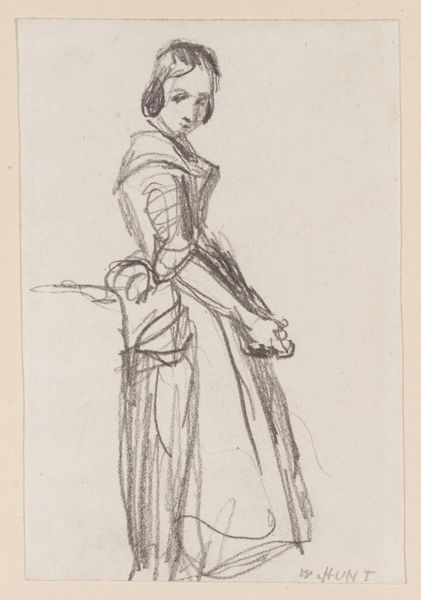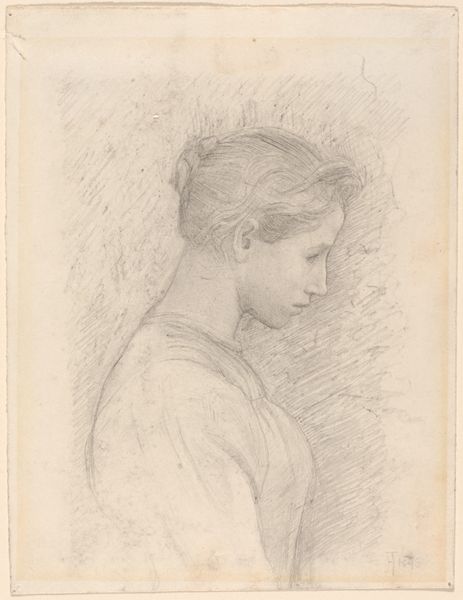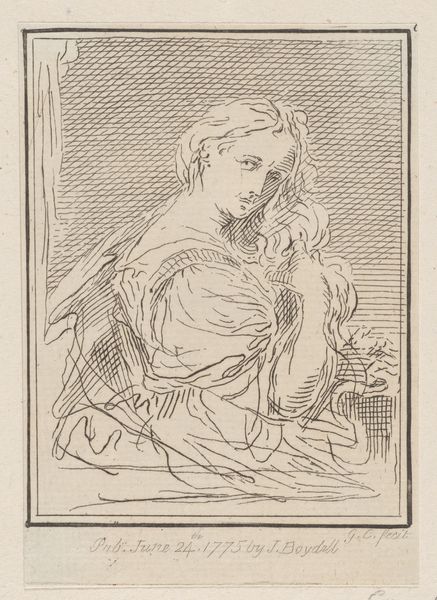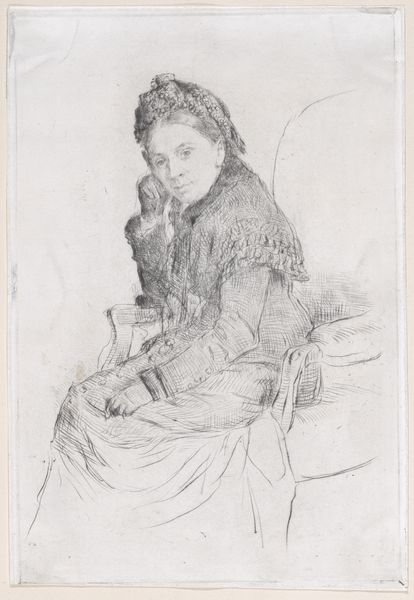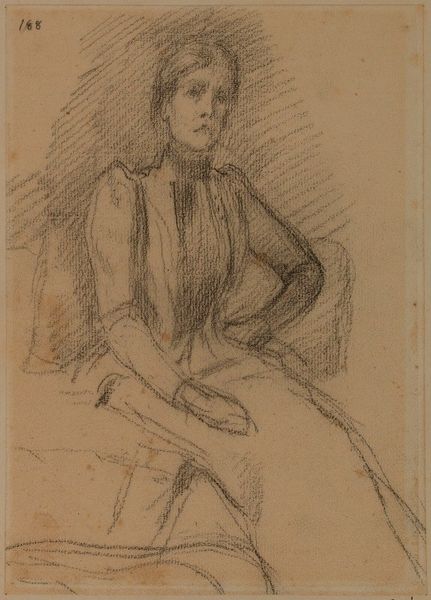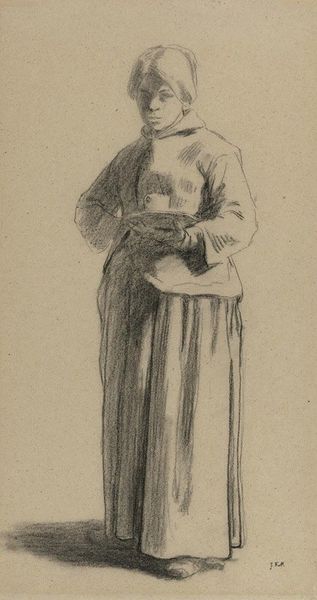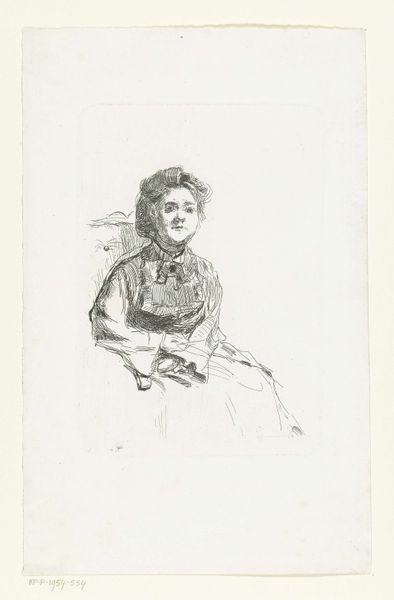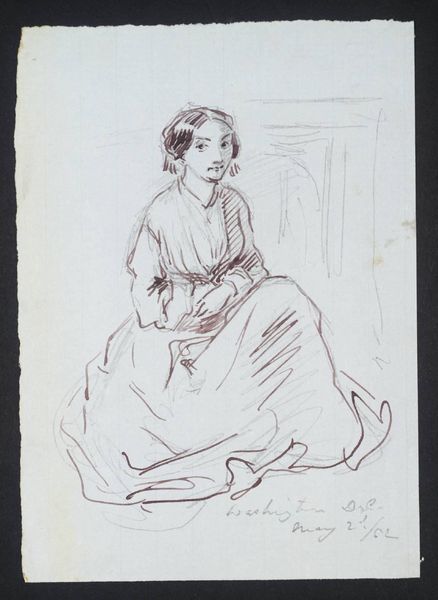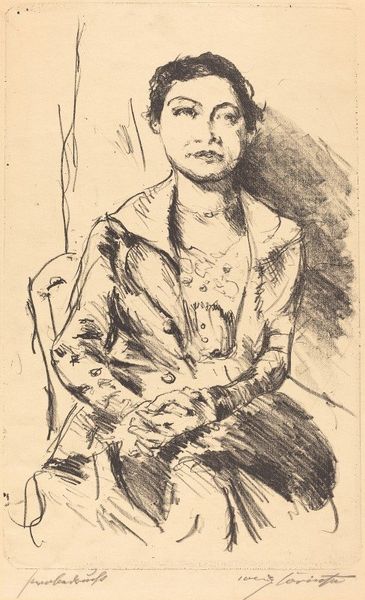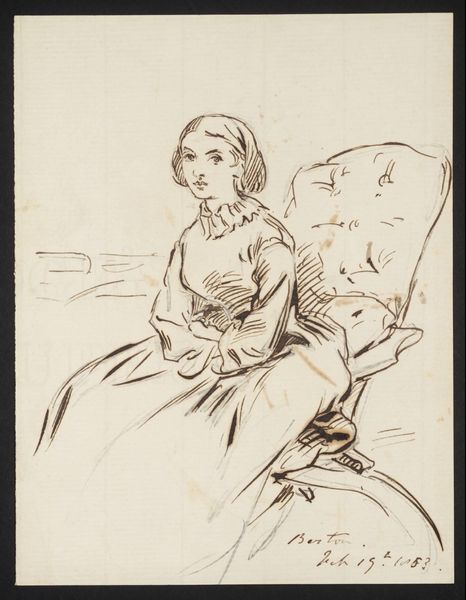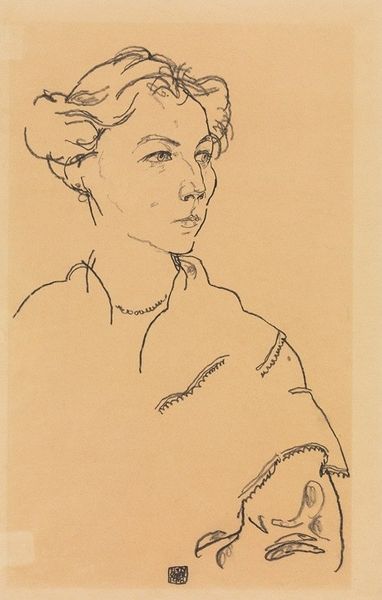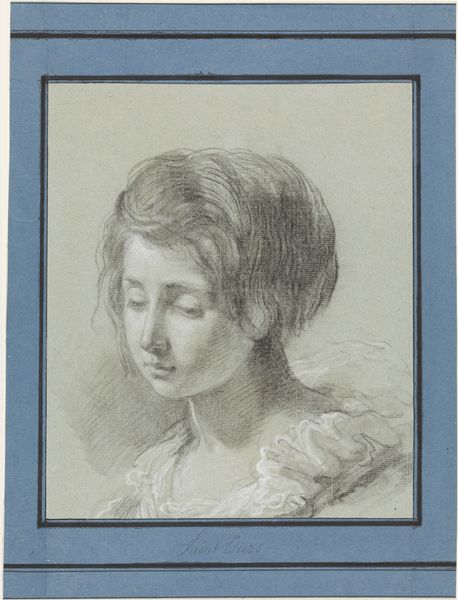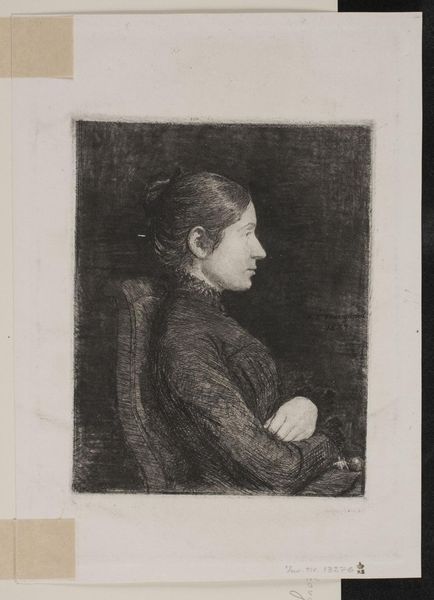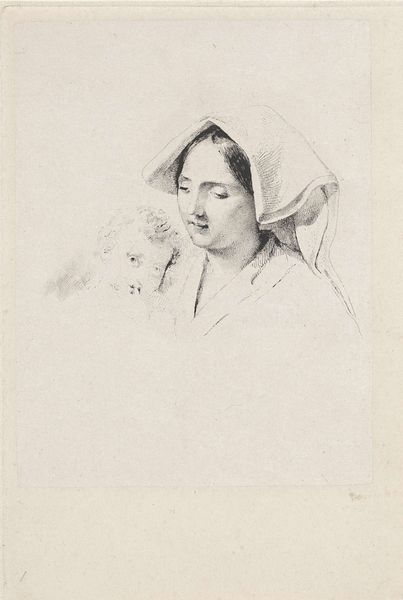
drawing, pencil
#
portrait
#
drawing
#
caricature
#
pencil drawing
#
pencil
#
portrait drawing
#
academic-art
#
realism
Dimensions: height 111 mm, width 80 mm
Copyright: Rijks Museum: Open Domain
Editor: Here we have David Bles' "Portret van een vrouw," a pencil drawing from the late 19th century. The woman's gaze is lowered, almost shy, and her posture seems to suggest a kind of weariness. What do you see in this piece, especially in terms of its historical and social context? Curator: What strikes me is the almost palpable sense of constraint within this portrait. Bles, as a Jewish artist working within a dominant cultural milieu, would have likely been keenly aware of social hierarchies. Consider the woman’s downcast eyes. Is it mere modesty, or could it represent a more internalized form of subjugation? Pencil drawings like these were often studies, preparations for larger, more ‘important’ works. Who gets memorialized in grand oil paintings and who remains in the realm of sketches? That’s a power dynamic worth unpacking. Editor: That’s interesting! So you're suggesting the very medium of pencil sketch and her pose might reflect a broader commentary on social standing? Curator: Precisely. Consider, too, the burgeoning feminist movements of the late 19th century. This was a time of intense debate about women's roles, rights, and visibility. The drawing might seem demure on the surface, but it exists within that climate of shifting identities and challenges to patriarchal norms. Are we looking at a subject being contained, or subtly resisting that very containment? Perhaps even unconsciously, through the act of portrayal, she is claiming space. Editor: So, rather than just a simple portrait, it's a complex reflection of a woman existing within a restrictive social framework. Curator: Absolutely. Art is never created in a vacuum. By examining the historical context and considering the prevailing social attitudes, we can start to uncover layers of meaning that might not be immediately obvious. And those readings are, of course, always open to further interrogation. Editor: I see her differently now, less passive and perhaps a bit defiant! Curator: Excellent! That active engagement is what brings art history to life, allowing us to connect with these figures across time and recognize their ongoing relevance to contemporary discussions around identity and representation.
Comments
No comments
Be the first to comment and join the conversation on the ultimate creative platform.
